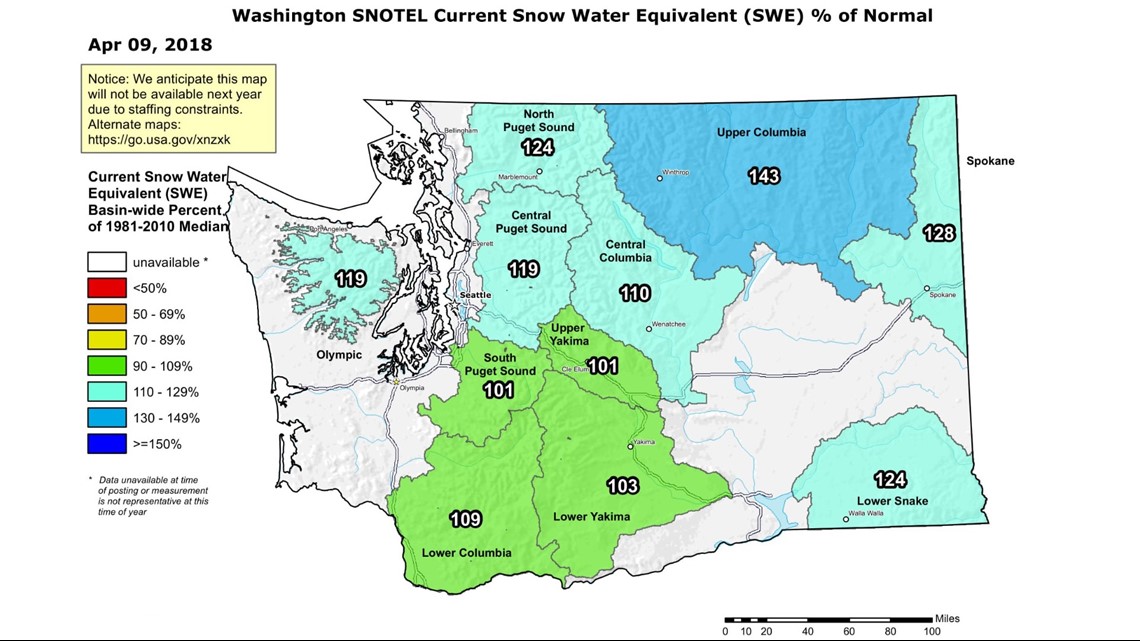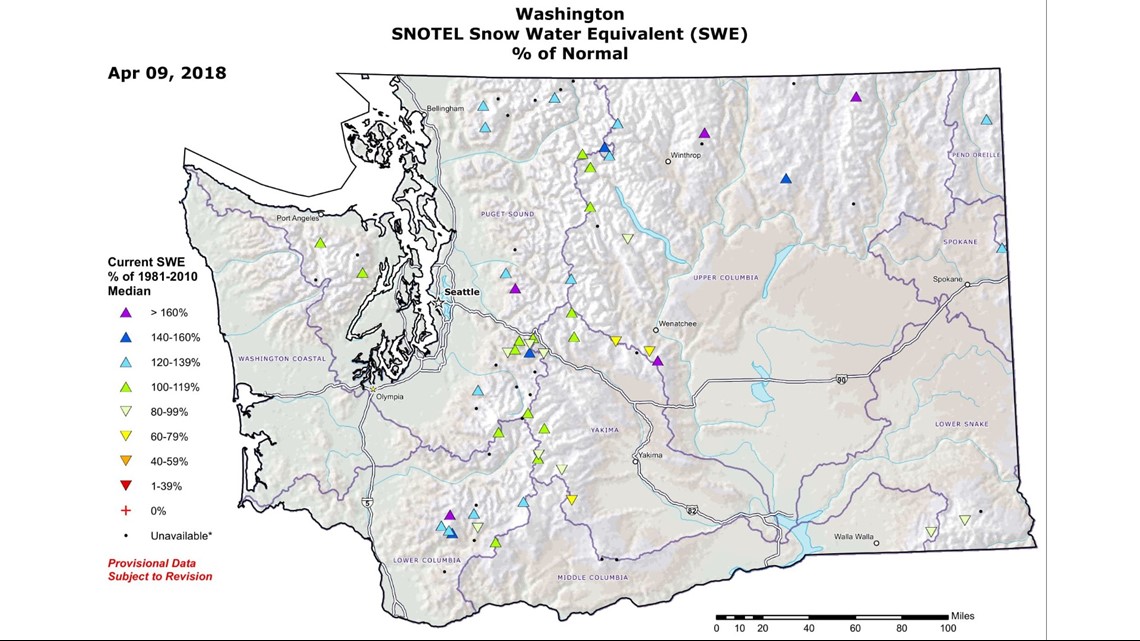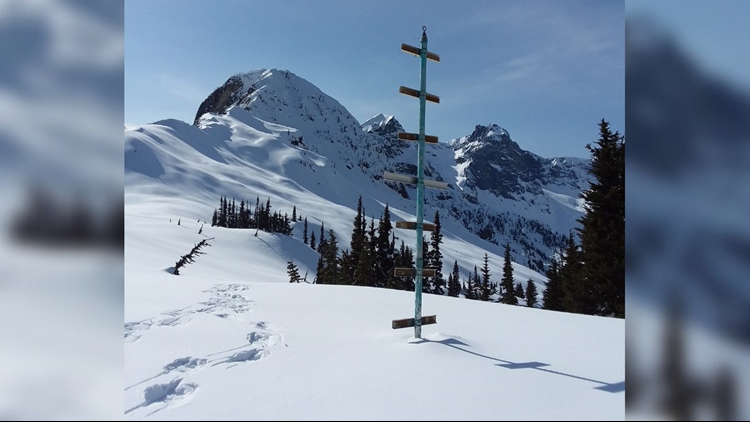Washington state is heading into spring with above normal snowpack, according to federal data released Monday.
Snowpack is on average at 113 percent, or 13 percent above normal, across Washington state, according to the Natural Resources Conservation Service’s National Water and Climate Center in Portland, Ore. The snow pack ranges from 155 percent to just below 80 percent in the lowest areas on April 1, which is considered the peak of the snowpack season.


A map shows the snowpack in the Central Puget Sound area, which is just east of Everett and Seattle, is 119 percent of normal. South Puget Sound, which is east of Tacoma, is 101 percent of normal.


In some places it was 60 percent above normal, as it was measured by Snohomish County’s Public Utility District above Spada Lake. The lake provides about 7 percent of the utilities power and provides much of the fresh water for the county.
Snohomish County PUD buys most of its power from the Bonneville Power Administration, which also benefits from the strong snowpack as most of its dams will benefit from more water expected to last longer through the season.
“The more snow melt there is to generate with, the better we can do to keep our prices down,” said Brad Spangler, senior manager for generation at Snohomish County PUD.
It was a different story in 2015, which was the second year of a two-year drought, a record that had stood for over a century until the summer of 2014.
“It was such an anomaly, especially 2015, to have that low a snowpack, the proverbial snow drought as it got coined,” said Scott Pattee, water supply specialist for the Natural Resources Conservation Service, part of the U.S. Department of Agriculture. “We never saw those kinds of conditions before and hope to not see them again.”
The strong snowpack will keep water going to homes, hydropower going to agriculture, and it could help delay fire season.
A wildfire outlook released last week by the National Interagency Fire Center showed a quiet spring and early summer in Eastern Washington with a sharp uptick for wildfire potential in July.



